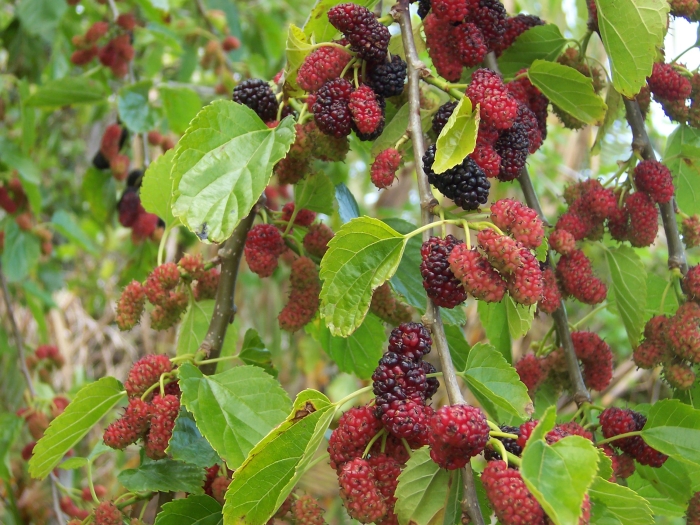White Mulberry
(Morus alba)
White Mulberry (Morus alba)
/
/

B.navez
CC BY-SA 3.0














































































Estimated Native Range
Summary
White Mulberry is valued for its rapid growth, tolerance of pollution, and ability to provide quick shade. Its fruits are eaten fresh, dried, or made into treats. It is used in urban settings, as a windbreak, and for its importance in sericulture (silkworm farming). The tree prefers full sun to part shade and can adapt to a variety of soil conditions, including those with different drainage speeds. However, it can be invasive outside its native range, so caution is advised.CC BY-SA 4.0
Plant Description
- Plant Type: Tree
- Height: 30-50 feet
- Width: 20-25 feet
- Growth Rate: Moderate
- Flower Color: N/A
- Flowering Season: Spring
- Leaf Retention: Deciduous
Growth Requirements
- Sun: Full Sun, Part Shade
- Water: Low
- Drainage: Fast, Medium, Slow
Common Uses
Bank Stabilization, Bee Garden, Bird Garden, Butterfly Garden, Deer Resistant, Drought Tolerant, Edible*Disclaimer: Easyscape's listed plant edibility is for informational use. Always verify the safety and proper identification of any plant before consumption., Erosion Control, Rock Garden, Salt Tolerant
Natural Habitat
Deciduous tree native to open woodlands and forest edges in East Asia, particularly in regions of northern and central China, and India
Other Names
Common Names: Mulberry, Silkworm Mulberry, Witte Moerbei, Vitmullbärsträd, Vitt Mullbär, 뽕나무, Morera, Weißer Maulbeerbaum, Chinese White Mulberry, Russian Mulberry
Scientific Names: , Morus alba, Morus alba var. tatarica, Morus alba f. tatarica, Morus alba subsp. tatarica, Morus indica, Morus serrata, Morus japonica, Morus tatarica, Morus alba var. alba
GBIF Accepted Name: Morus alba L.